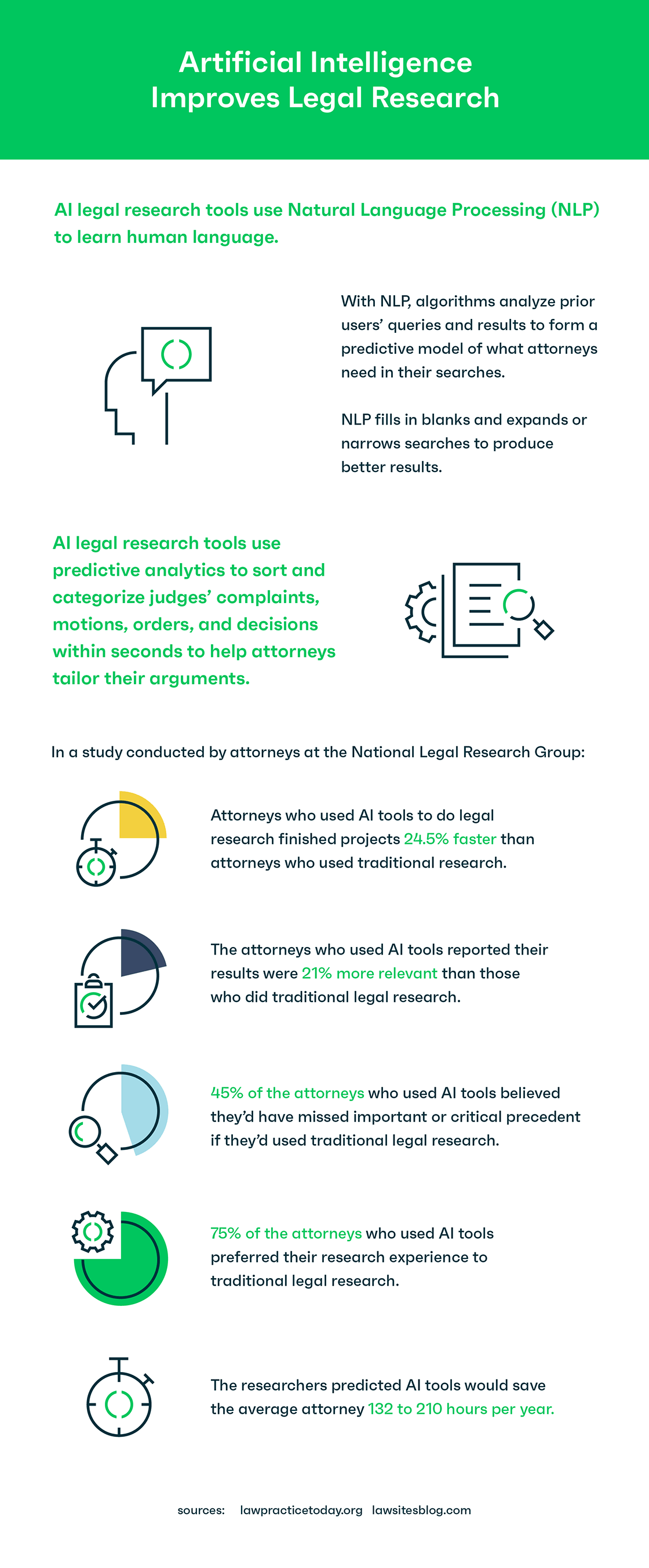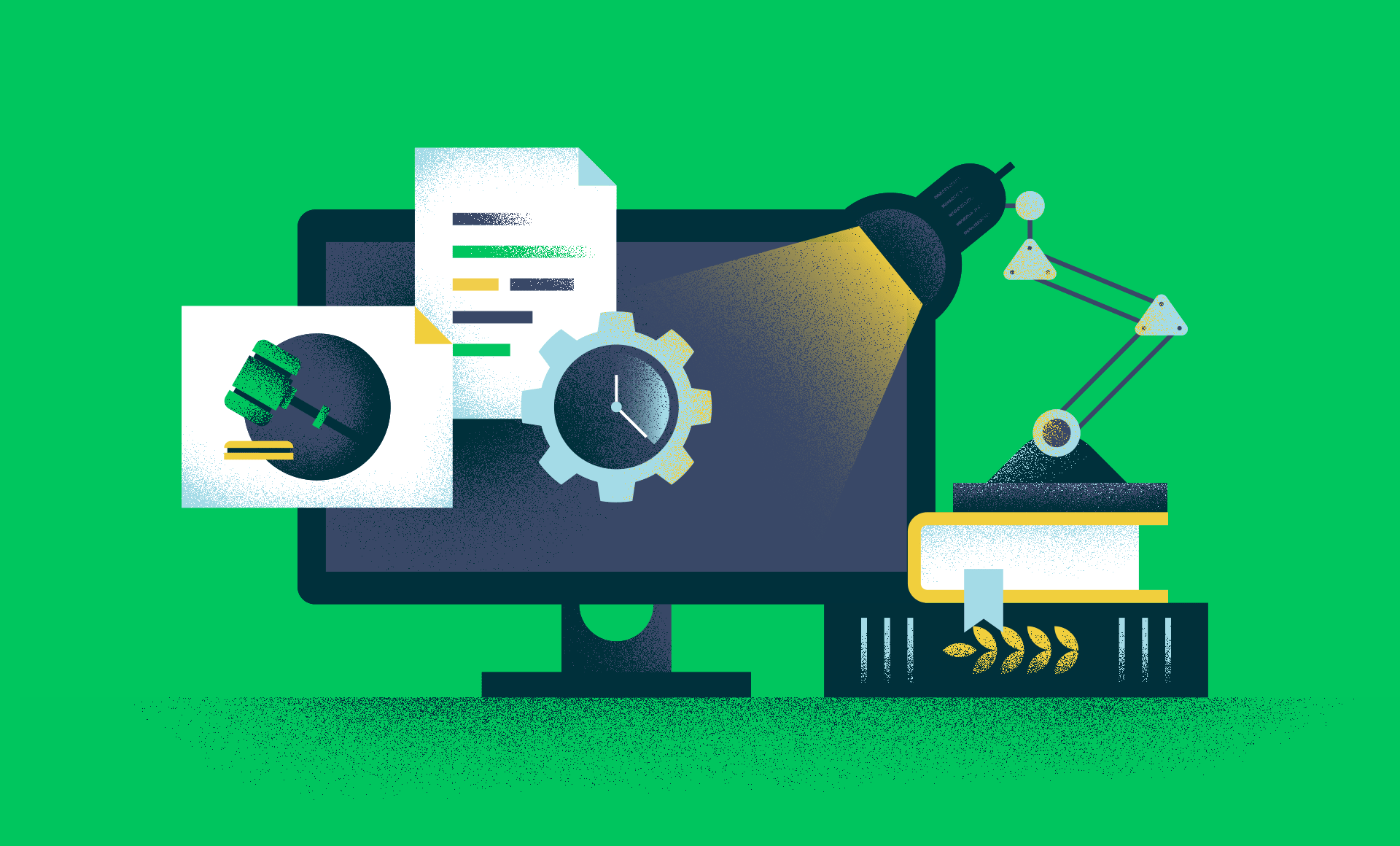It’s the rare lawyer who enters law to perfect the art of the search term. Most aspiring litigators imagine themselves wowing a jury or impressing clients with their ingenuity.
Legal research can frustrate clients, too. It’s a time-consuming and expensive exercise that has traditionally been necessary. Our legal system is based on precedent, meaning judges make rulings consistent with prior cases on the same subject. Every past case relating to the same issue is potentially relevant to a client’s case. With thousands of court cases, a client’s problem has likely come up before, but when? And under what circumstances? The massive amount of data and the uniqueness of each case makes legal research a “needle in a haystack” problem. Attorneys must spend hours traversing through legal precedents to find cases to support a legal argument, and they sometimes miss the needle.
Artificial intelligence (AI) is changing the game—and the cost—of legal research. AI legal research refers to computer software and systems that don’t only rely on pre-programmed tasks but learn as they go. Keep reading to learn how AI legal research tools help lawyers find relevant cases and build better arguments.
Natural Language Processing Improves Searches
While attorneys and paralegals have done most legal research on computers for decades, the language of traditional legal research is stilted and awkward — far different from natural human interactions.
For instance, imagine you want to ask your coworker whether a school can be liable for an injury to a student that occurred off-campus. You wouldn’t say to your colleague, “Hey Jane! (school /3 (liab!) /3 injur! /10 (“off campus”)) even though that’s how you would search for a case using traditional legal research.
You wouldn’t use this language with your colleague because it doesn’t sound natural and because the query is too specific. In traditional legal research, queries must be specific to avoid pulling up thousands of irrelevant cases. But with such limited search terms, it’s easy to miss the perfect case. For instance, you wouldn’t find one that explains a school is liable for harm (rather than injury) that occurs off school grounds (rather than off-campus).
AI legal research tools use natural language processing (NLP) to process human language the way a colleague would without producing thousands of irrelevant cases. In the example above your colleague wouldn’t think “Oh, you want cases where a student was injured off-campus, not harmed,” and fail to tell you about a relevant case. NLP works the same way. It uses prior users’ queries and results to form a predictive model of what attorneys need in their searches. NLP lets AI legal research tools fill in or delete blanks and expand or narrow a search to get to the true meaning of a query.

Predictive Analytics Tools Predict How a Court May Rule
The same sort of machine learning that helps AI interpret search queries makes it a valuable legal research tool to help attorneys predict how courts will rule.
In the federal system, which uses the e-filing system Public Access to Court Electric Records (PACER), more than 500 million legal documents are stored online. No one could sift through this vast system of documents, especially since federal courts add reams of documents daily.
But AI helps attorneys sort and categorize these complaints, motions, orders, and decisions within seconds, providing previously unattainable insight.
For instance, imagine you’re an attorney filing a motion to seal before a judge in the Southern District of New York. You have no experience with this judge and have heard only a few anecdotal stories from colleagues. Using AI, you can sort through all of her decisions and focus on motions to seal to see what arguments she has found compelling in prior decisions. Then, you can tailor your argument to persuade her.
You can also see the cases the judge cites most frequently, which may give insight into her leanings. For instance, she may lean toward being favorable to defendants if she frequently cites Ashcroft v. Iqbal, a 2008 Supreme Court case that heightened the pleading standard needed to survive a motion to dismiss or for summary judgment. This information can help you build a more effective argument and provide more details in your complaint.
AI Legal Research Saves Time
Lawyers work an average of 6.21 hours per week longer than their contracted hours, almost one full day every week. Long hours harm attorneys who want to attain work-life balance. Lawyers have higher rates of depression and anxiety than people in other professions. And high legal bills make it hard for many people to hire lawyers and create distrust in the legal profession.
AI in legal research makes attorneys and clients happy. It cuts hours of unproductive legal research and arms lawyers with the core set of cases they need to make the best argument for their clients. In one study performed by the National Legal Research Group, Inc., AI tools allowed expert legal researchers to finish their research 24.5 percent faster than attorneys using traditional legal research. The researchers predicted AI tools could save the average attorney between 132 and 210 hours per year.
Better for Attorneys, Better for Clients
With AI tools, attorneys can use the time they save doing legal research to do the work only humans can, such as building arguments and convincing juries. Not only do attorneys have more time to do what they entered the law to do, they may be able to take a few more vacation days. And clients win too because they get better value from their attorneys as well as lower legal costs.
